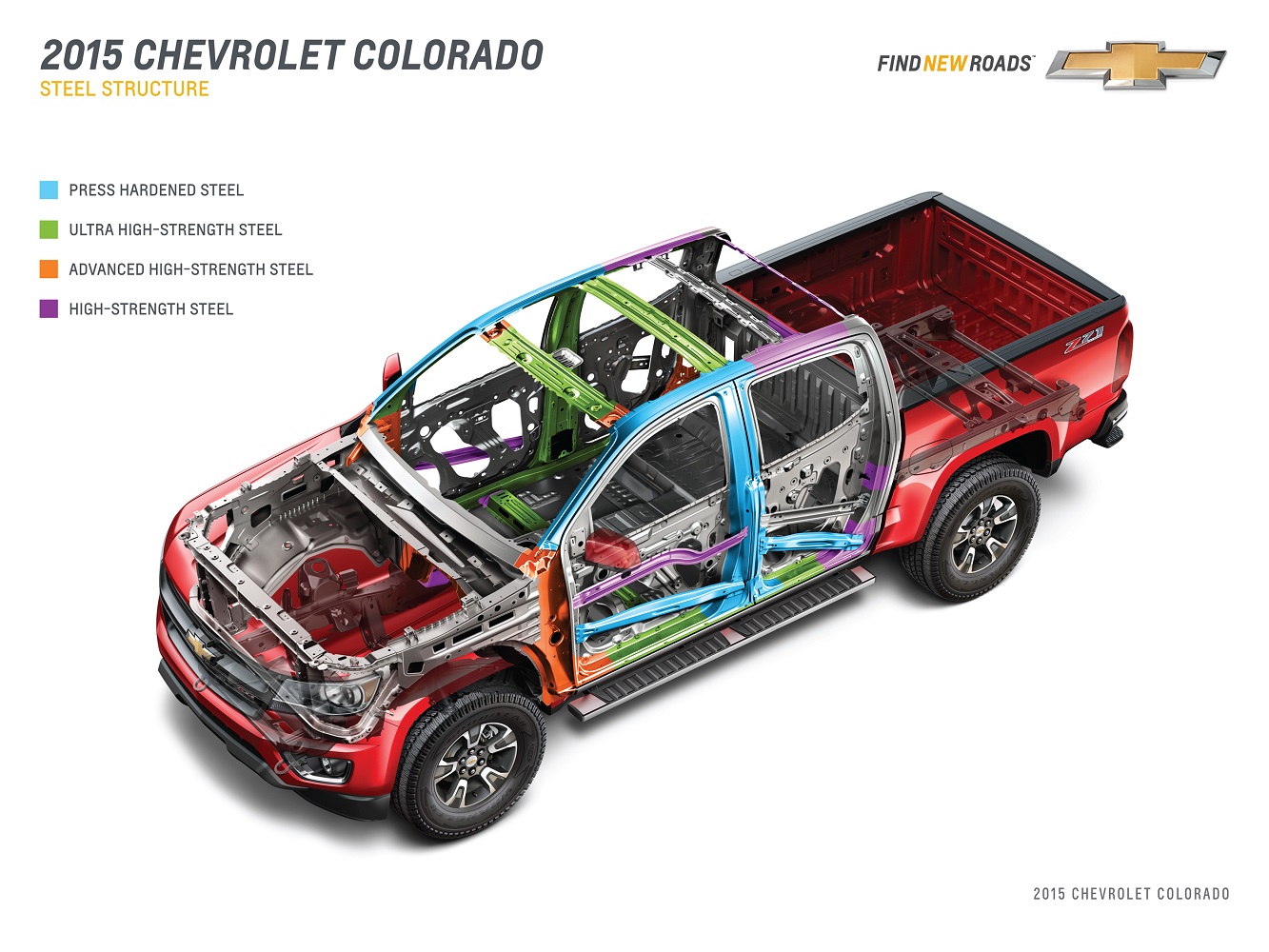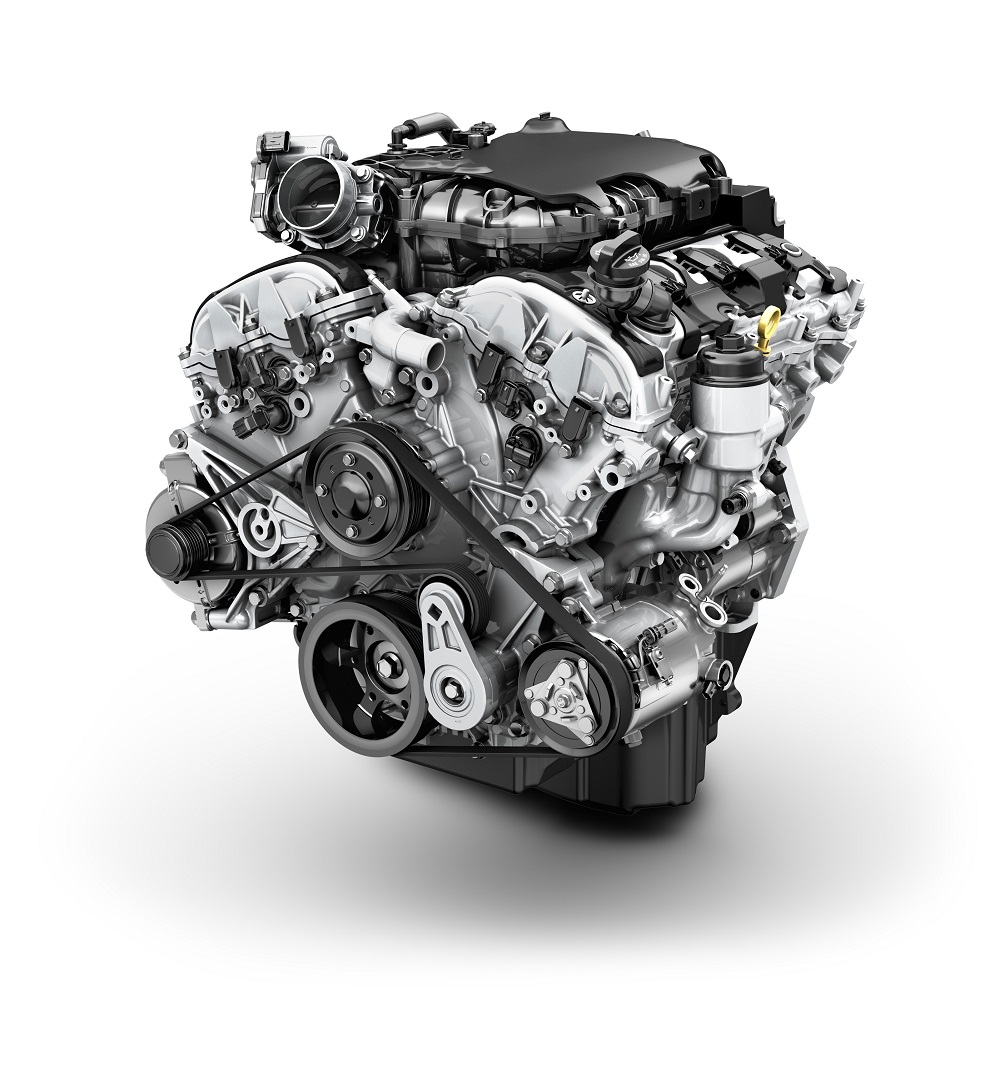The 2015 Chevrolet Colorado uses engineering techniques and lightweight materials to enhance pickup capability in a mass-efficient midsize package. The 2015 Colorado 4×4 crew cab weighs 400 to 635 kg less than a full-size truck.
This weight saving is a result of the slightly smaller overall dimensions of the Colorado, along with use of lightweight materials, including high-strength steels and aluminum. The outcome is a truck designed to be the most fuel-efficient in its segment. Chevrolet expects EPA fuel economy estimates for Colorado this summer.
The Colorado will begin arriving in showrooms this fall at the same time as the new Ford F-150, setting up a sharp contrast between two strategies for reducing the weight of pickups.
“When it comes to building lighter pickups, there is more than one answer,” said Jeff Luke, executive chief engineer. “Building on our experience with the new Silverado, we engineered the Colorado to be highly mass-efficient, while still providing the performance, capability, dependability and features that midsize truck customers are asking for.”
2015 Chevrolet Colorado dimensions
In overall size, Colorado fits neatly below the Silverado 1500 in the Chevrolet lineup. The short-bed crew cab is 5.14 m. long, 43 cm shorter than a comparable Silverado 1500. Colorado’s overall width of 1.9 m. is 13 cm narrower than Silverado and 5 cm wider than the Equinox.
Based on GM’s latest testing, Colorado is expected to lead the midsize segment with up to 3040 kg of available towing capability.
“For many customers, a midsize pickup is simply a better solution,” said Luke. “You get the versatility and capability of a truck in a package that is fun to drive and easier to maneuver and park. “Colorado will meet the unique needs of midsize pickup customers, while also providing an attractive, cost-effective alternative for anyone seeking a more fuel-efficient pickup.”
Use of lightweight materials
In creating Colorado, GM engineers chose materials that would make the most of the strength and safety of the truck, while balancing dependability and cost of repairs and total ownership. Like Silverado, Colorado uses lightweight, high-strength steels. Fully boxed frames formed primarily from high-strength steel reduce weight and increase stiffness. Key areas of the body structure also benefit from high-strength steels, reducing mass and enhancing strength and safety. Overall, about 71 percent of the body structure is comprised of high-strength steels.
The pickup box consists of roll-formed steel, which is lighter and stronger than traditional stamped steel.
Major aluminum components include the hood, front steering knuckles, and cylinder heads and engine blocks for both the 2.5l four cylinder and 3.6l V6. Reflecting the attention to weight savings found throughout the Colorado, the aluminum heads for the V6 feature integral exhaust manifolds, which save about 6 kg over traditional cast-iron manifolds.
The front of Colorado features a composite grille opening reinforcement with active shutters that seals the front of the truck, reducing aerodynamic drag and improving cooling performance. Another weight-saving feature, electric power steering, also helps improve steering assist.
In addition to the lightweight aluminum cylinder heads and blocks, both engines feature direct fuel injection and continuously variable valve timing. Based on current GM testing, the standard 2.5l four cylinders is estimated at 193 horsepower, while the available V6 is estimated at 302 horsepower.
Mass comparison, 4×4 crew cabs
| Curb wt., kg | Difference, kg | |
| 2015 Colorado short box crew 4×4, 3.6l V6 | 1963 | — |
| 2014 Silverado 1500 short bed crew 4×4, 5.3l V8 | 2367 | 403 |
| 2014 Nissan Titan short bed crew 4×4, 5.6l V8 | 2404 | 440 |
| 2014 Ram 1500 short bed crew 4×4, 5.9l V8 | 2422 | 459 |
| 2014 Ford F-150 short bed crew 4×4. 5.0l V8 | 2534 | 570 |
| 2014 Ram 1500 short box crew 4×4 3.0l diesel V6 | 2555 | 591 |
| 2015 Toyota Tundra short bed crew 4×4, 5.7l V8 | 2613 | 649 |
Source: GM
Romain’s opinion:
Reducing the weight by adapting the vehicle size to the need of the customer is a cheap and efficient way. But still, I can’t find the comparison of the load capacity and I guess that it is lower on the Colorado than on its competitors. Do you think that the customer is ready to sacrifice load capacity and towing capability for an improved mileage?




















